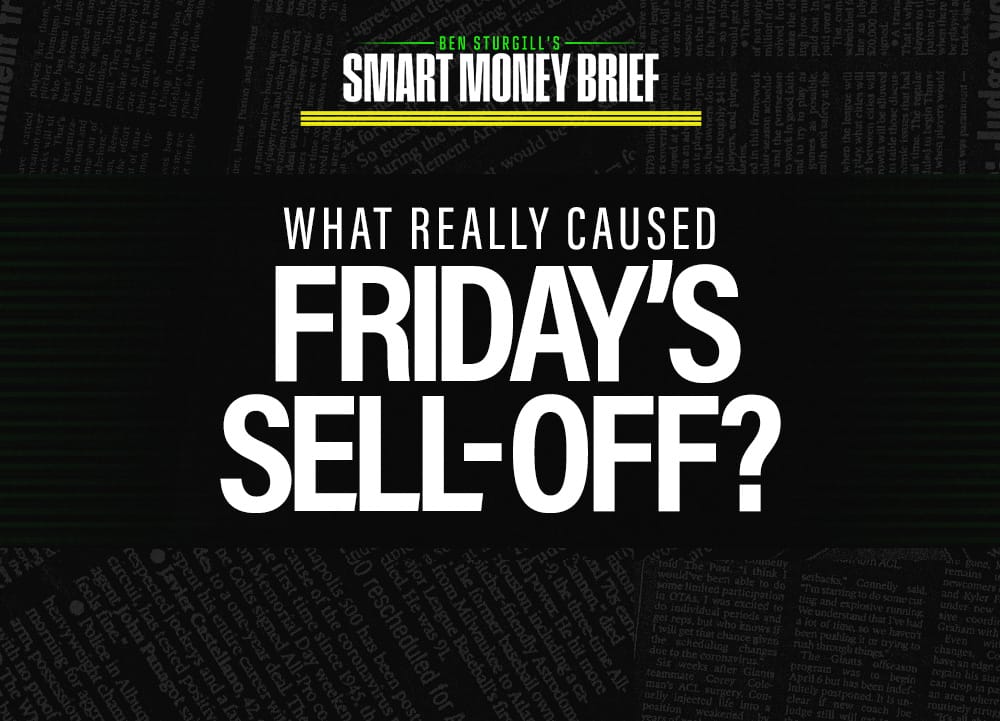Good morning, traders…
I’ve shown you how to defeat the fear of missing out (FOMO)…
But there’s another common fear that keeps traders from making money — the fear of missing an exit (FOME)…

As I reviewed my trading journal this morning, something caught my eye. It popped up in one of my trades … a hesitation to hold the position to my price target.
It wasn’t a fear of loss or impatience. It felt deeper, like I doubted my own analysis. And when I thought about “reverse FOMO,” it clicked.
That’s what’s bubbling under the surface for many of us. You can do your due diligence, form a solid trading plan, but still yank the trade early because you’re not confident enough to see it through.
I know I’m not alone here. But we can’t let FOME pull us out of fantastic trades.
Let’s Figure Out What Causes FOME And How To Flip It On Its Head — So You Can Hold Your Winners To Their Intended Targets With Confidence…
FOME (and What It Costs You)
FOME kicks in when you’re green on a trade, but anxious that your gains will vanish if you hold. You exit early and miss a bigger move.
You’re doubting yourself. That doubt tends to sneak in when you haven’t firmly documented your edge or your reasoning.
Without that clarity, second‑guessing steps in. You end up exiting the whole position with partial gains, only to watch the trade run farther without you.
If you’re only exiting early because you fear being wrong — or fear missing the chance to lock in gains — you’re trading based on emotion, not strategy.
3 Ways to Avoid FOME
Plan Before You Enter
Write down why you’re in the trade (before you’re in the trade).
What conditions must hold for you to stay in? What conditions make you exit? What’s your price target?
Once you’re in the trade, stick to your rules. Treat them as gospel. If the “exit conditions” haven’t been met, you don’t sell until your price target.
As I like to say, “If the trade hasn’t done anything wrong, you gotta stay long.”
Re-Frame Your Scale-Outs
You should plan to scale out partial profits at one level, then let the rest run toward a second target. That’s great. But treat that plan as part of your entry strategy, not a panicked retreat when profit appears.
When you take that partial off, update your mindset: you’re still in, still playing the next leg…
The setup is working, don’t punish it for doing so.
Having that structure helps squash the impulse to bail too early.
Journal Your Emotions
Your trading journal shouldn’t look like some mathematician’s logbook, just ledgers of numbers.
You should document your emotions. How did you feel when you took your first scale? Was any doubt creeping in?
Over time, you’ll notice themes. Those themes are emotional patterns, and that’s exactly what the journal is designed to fix.
What Defeating FOME Looks Like
“I set my plan. I see signs to keep going. I’ll follow those signs.”
You watch price, you note what confirms your thesis, you let winners run. You always sell when you hit your final price target. But you only cut the trade early when the conditions change, not when your doubt rises.
That shift begins when you catch yourself wanting to bail out early, not because of price, but because of fear.
That’s your moment. Pause. Ask: “Which part of my analysis still holds? What condition would I need to break before I exit?” That pause gives you space to choose based on analysis, not impulse.
I want you to challenge FOME this week. Take one winner you felt tempted to exit early. Journal your impulse vs. what your pre‑defined plan said. That contrast — where plan and impulse diverge — is where you can improve the most.
Happy trading,
Ben Sturgill
P.S. Want to learn how to execute trades like this?*
The best place to start is in our Smart Money Workshops.
Stop missing the best setups in the options market.
Join us TOMORROW, August 15 at 10:00 a.m. EST.
The opportunity is yours. You just have to take it.
*Past performance does not indicate future results



